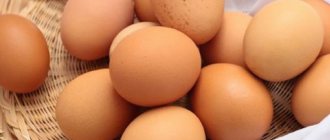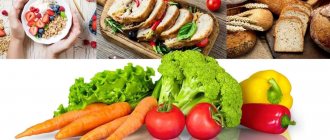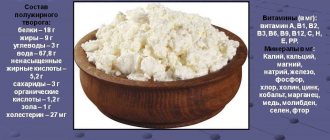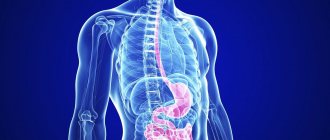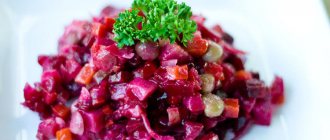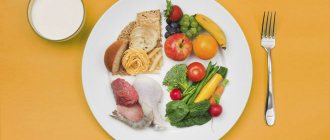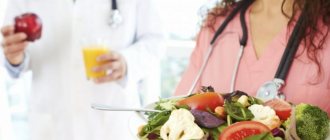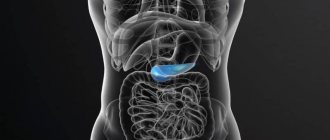In the twentieth century in Russia, gastroenterologist Professor Manuil Pevzner studied the influence of human diet to alleviate the course and treatment of various diseases. The result of many years of painstaking work was the creation of a series of therapeutic diets consisting of specially designed 15 tables. Each of the diets is intended for therapeutic nutrition of the patient depending on the disease and helps to quickly restore the body’s functioning.
The fifth diet is prescribed for liver diseases, impaired secretion of the digestive glands, and problems with the biliary tract. At different stages of diseases and complications, the composition of the diet may change. We’ll talk more about diet options No. 5, how to follow them, and the list of allowed and prohibited foods below.
Table number 5
The fifth table is a food system, which consists of a list of dishes, regime, and rules for processing food. Can be used in both adults and children. Its main goal is to improve and restore the functioning of the liver and biliary tract. In this regard, the indications for prescribing diet No. 5 are: chronic cholecystitis, liver cirrhosis (without decompensation), chronic hepatitis, liver steatosis. In addition, it is prescribed for 14-17 days after removal of the gallbladder. Also, table No. 5 can be used for mild toxicosis during pregnancy.
Diet 5 is applicable only in cases of chronic diseases outside of exacerbation and during periods of recovery. The use of this treatment table is contraindicated during periods of exacerbation of diseases and existing complications, as well as with concomitant gastritis or ulcers.
Content:
- Table number 5
- Therapeutic diet
- Menu for table No. 5
- Table number 5a
- Table number 5b
- Table number 5p
The diet is prescribed for a long time. At first it is prescribed for about a week with constant monitoring of the patient. If the nutritional system is tolerated normally, the course is extended. The duration of a therapeutic nutrition program is most often one and a half years and depends on the dynamics of the disease. Also, the prescribed diet No. 5 can be replaced or adjusted during this period.
A diet that includes table 5 is most often prescribed to patients with impaired liver and gallbladder function. Such nutrition improves the functions of these organs, and also normalizes metabolism and the digestion process. The program has a beneficial effect on almost all internal organs and can serve as a prevention of other diseases.
The main therapeutic effect on the liver, gall bladder and biliary tract is provided by three sparing factors. That is, the food taken should be gentle in chemical composition and mechanical processing. The temperature of the food you eat is also important.
Chemical composition. The main objective of diet No. 5 is to provide the patient with adequate nutrition, while excluding those foods that impair the functioning of the liver and gall bladder. For hepatitis, cirrhosis and cholecystitis, it is forbidden to eat foods high in cholesterol, fats, and essential oils. It is important to ensure that every day the patient consumes all the necessary components: proteins, carbohydrates, fats in small quantities. Salt is limited to 10 g per day. Table No. 5 is completely balanced and involves consuming 2500 kcal per day. For pregnant women, the daily calorie content should be at least 2800 kcal.
Diet No. 5 requires compliance with the temperature regime of the food consumed in the range from 20 to 60 degrees. Cold and too hot dishes are undesirable for diseases of the liver and bile ducts.
Mechanical processing is the grinding of food, which is necessary to facilitate the digestion process. For the fifth table, it is not necessary to chop or grind everything; a lot can be eaten in whole pieces. Vegetables with a high fiber content must be chopped: finely chopped, grated, boiled - grated through cheesecloth. The same goes for stringy meat.
Dietary dishes can be baked, boiled in milk or water, or steamed. Twice a week you can eat stew: vegetable stew, roast from minced meat, dietary cocotte. It is forbidden to eat fried foods, as such food contains fat oxidation products, which impede the production of bile, thereby impairing liver function. You need to eat often - at least 5 times a day, in medium portions.
Let's take a closer look at what the diet for a patient on the fifth diet may consist of.
Every fifth person is at risk
Millions of people carry cholesterol stones in their gallbladders. According to statistics, they occur in 10–30% of adults. But these are average figures; among women the numbers are significantly higher: they have stones 3–8 times more often than men. This is due to female hormones. Both in connection with the presence of them in every woman, and with hormonal contraceptives, there is evidence that they can increase the risk of the formation of cholesterol stones in the gall bladder.
The main difficulty in identifying this problem is not even any pain, but the fact that due to the discovery of stones, surgical operations are performed in which the gallbladder is removed. But this is a serious operation. Until recently, it was performed openly, through a large incision, and there were many complications and even deaths. Today it is usually done laparoscopically - through a “straw”, but it is still not an easy procedure. In reality, the operation is not indicated for everyone. But at the same time, of course, the presence of such stones is not at all beneficial for health.
Therapeutic diet
The list of permitted products is quite wide.
Restrictions apply only to fatty, spicy, salty and fermented foods, because such food increases the secretion of digestive juices of the pancreas and irritates the gastric mucosa. Below is a list of foods that should be limited or completely eliminated. Table ration number 5
| Group | Allowed | Forbidden |
| First |
|
|
| Vegetables |
|
|
| Meat |
|
|
| Fish and seafood |
|
|
| Flour |
|
|
| Cereals |
|
|
| Milk products |
|
|
| Eggs |
|
|
| Berries and fruits |
|
|
| Dessert |
|
|
| Beverages |
|
|
Having a list of acceptable dishes and products, you can create therapeutic nutrition. It is recommended to prepare the menu in advance, at least 2 days in advance. This way you can stock up on the necessary products and select recipes, and preparing dishes will take less time. Exact adherence to all diet rules will protect against exacerbation of the disease and speed up recovery.
Foods that CANNOT be consumed while on a diet.
Beverages:
Coffee, cocoa; carbonated and cold drinks, grape juice, Alcoholic drinks (all are strictly prohibited, including low-alcohol ones).
Soups:
Broths cooked with meat, fish and mushrooms, as well as broths based on legumes, sorrel or spinach; okroshka in any form.
Porridge:
Legumes are excluded; pearl barley, barley, corn grits, limited to millet.
Pasta:
Fatty pastes; pasta with ingredients prohibited in the diet, as well as with spicy, creamy or tomato sauces.
Meat/fish/seafood:
Kidneys, liver, tongue, all sausages, smoked products, as well as canned meat; cooking fats, along with beef and lamb, are completely excluded; canned fish, salted and smoked fish, fatty fish (salmon, trout, carp, eel, sturgeon, stellate sturgeon, beluga, catfish, etc.), granular caviar (red, black), sushi.
Bread:
All products made from puff pastry and pastry; fried donuts; fresh bread; pancakes; fried pies.
Fermented milk/milk products:
You should not eat salted cheeses; fatty dairy products; cream, milk 6%, fermented baked milk, full-fat cottage cheese.
Vegetables and fruits:
Mushrooms, corn, sorrel, spinach and rhubarb, radishes, turnips, eggplants, garlic, onions, asparagus, cooked sweet peppers; green onions, pickled vegetables, canned foods, including canned peas; salads and herbs that are bitter, sour, spicy (parsley, dill, spinach, chicory, arugula, frisee, etc.) cannot be used as a main component or main dish. Almost all raw fruits and berries, including sweet fruits (for example, figs and raspberries), as well as cranberries, lingonberries, grapes, dates, kiwis, oranges, tangerines, pears, persimmons, melons, pumpkin seeds, etc.
You can have pumpkin soup on the “Table No. 5” diet, but you shouldn’t sprinkle it with seeds when serving
Eggs:
Hard-boiled, fried, whole egg dishes.
Fats:
Pork, beef, lamb lard, cooking fats.
Sauces and seasonings:
Mayonnaise; ketchup; mustard, horseradish, pepper; vinegar; adjika; any spices.
Sweet:
Chocolate and cream products, ice cream; halva; any fatty desserts and confectionery products with cream.
Menu for table No. 5
To make it easier to create your diet, you can consider a ready-made sample menu and recipes for it.
The first day
Breakfast: milk oatmeal with pureed dried fruits, tea.
Lunch: pureed low-fat cottage cheese, tea.
Lunch: beetroot soup, 10 g sour cream, buckwheat with meatballs, bread.
Dinner: baked zucchini pancakes, a little sour cream 10% fat.
Second day
Breakfast: semolina pudding, tea with milk.
Lunch: wheat bread toast, sour jam or jam, black tea.
Lunch: dietary cabbage soup, bread.
Dinner: buckwheat groats, berry compote.
Buckwheat: boil 200 g of buckwheat well in a large amount of water. Grate 200 g of cottage cheese, add to it a tablespoon of sugar, 100 ml of milk and one egg (mix everything). Combine the porridge and curd mass and bake under foil until fully cooked.
Day three
Breakfast: steamed carrot pancakes, tea.
Lunch: dry cookies, dried fruit compote.
Lunch: pearl barley soup, a little sour cream, bread.
Dinner: steamed chicken dumplings, boiled cauliflower.
Day four
Breakfast: semolina casserole, weak black tea.
Casserole: cook viscous semolina porridge and cool it (200 g of cereal). Add one and a half eggs, sugar, raisins or chopped prunes to the semolina. Beat everything well and bake in a greased pan until done.
Lunch: dry biscuit, fruit compote.
Lunch: soup with rice and vegetables, separately boiled chicken.
Dinner: boiled couscous with raisins, chamomile or rosehip infusion.
Day five
Breakfast: oatmeal with milk, tea.
Lunch: salad of cucumbers, lettuce and carrots.
Lunch: dietary borscht, sour cream, bread.
Dinner: vegetable stew, a piece of boiled lean beef.
Day six
Breakfast: baked pears with honey, tea.
Lunch: wheat toast with mashed cottage cheese.
Lunch: milk noodle soup.
Dinner: mashed potatoes, meatballs stewed in sour cream, rosehip broth.
Day seven
Breakfast: protein omelet with boiled green beans, tea.
Lunch: salad of dried apricots and grated carrots.
Lunch: soup with oatmeal, carrots and potatoes, bread.
Dinner: meat soufflé, rye bread toast, chamomile infusion.
Meat soufflé: mince 200 g of boiled beef twice and mix with 1 yolk. Pour 100 ml of milk into the minced meat and mix. Beat 2 egg whites into a thick foam and carefully mix them with the meat. Steam the soufflé.
Based on appetite, you can add snacks, second breakfast and afternoon snack. This is a sample menu for the week; you can make your own adjustments to it or come up with your own personal recipes. The main thing is not to deviate from the rules: eat only warm food from permitted ingredients in small portions.
How to prepare healthy diet meals
It is easier for patients to stick to a diet if the dishes in it are varied and tasty. It is important to follow the rules of cooking and serving food.
The following recipes are suitable for feeding patients on the 5P and 5A diets:
- Steamed turkey cutlets. Ingredients: 200 g turkey fillet, 30 g white bread, 50 ml milk, 3 teaspoons vegetable oil, salt to taste. Soak the bread pulp in milk for half an hour. Prepare minced meat, add butter, salt, bread and milk. Mix well and form into cutlets. Place on a steamer rack and cook for 30-40 minutes.
- Fish in Bechamel milk sauce. Bake any lean fish fillet in foil. For the sauce you need 150 ml of milk (fat content up to 3.2%), a teaspoon of butter, a teaspoon of flour, a pinch of sugar, salt to taste. Melt butter in a frying pan, add flour using a sieve. Fry the flour for 2 minutes. Pour in the milk (should be hot) in a thin stream. After boiling, cook for another 10 minutes. Add sugar and salt. Pour the prepared sauce over the fish.
- Diet Olivier. To prepare, you will need one medium-sized carrot, two potatoes, two eggs, 300 g of boiled chicken fillet, fresh cucumber, and a spoonful of low-fat sour cream. Peel potatoes and carrots, boil in salted water. Hard boil the eggs. Peel the cucumber. Cut all ingredients into cubes, mix, add salt and season with sour cream.
- Fruit cake without baking. Ingredients: 1 ripe banana, can of canned peaches (you can take 2 fresh), 300 ml of unsweetened yogurt, biscuits, 200 ml of water, sachet of gelatin. Pour gelatin with warm water and let it dissolve. Add yogurt and stir. Cover the bottom of the vessel with parchment. Break the cookies into crumbs. Layer the ingredients. Place the finished cake in the refrigerator overnight. In the morning, dessert is ready.
Products for cooking must be fresh. You should not buy meat and fish at spontaneous markets. Milk and cottage cheese should not be consumed raw.
Table number 5a
Diet 5a according to Pevzner is prescribed during periods of exacerbation of pancreatitis, cholecystitis, and cholelithiasis. It is used in cases of combination of these diseases with gastritis and peptic ulcer. The diet ensures maximum rest for the liver and gall bladder, spares the gastrointestinal tract, and facilitates the functioning of the bile ducts.
This diet option differs from the fifth table in even greater mechanical and chemical sparing. All dishes should be soft, pureed, slimy and mushy. The list of products remains the same, only with greater restrictions.
Soups should be light, with finely chopped or grated vegetables and pureed cereals. You can add boiled vermicelli and a little milk to them. Types with a high fiber content are excluded from fruits and vegetables; the consumption of quince and pear, as well as all varieties of cabbage, is not recommended.
Millet is prohibited from cereals. It is also not recommended to consume veal and young chickens. As for bakery products, it is preferable to eat no more than three pieces per day of dried bread made from second-grade flour. Desserts and drinks remain the same as in the previous version.
The menu for table 5a will consist of cereals, boiled vegetables, mashed potatoes (potatoes, meat) and vegetarian soups. You can prepare souffles, jelly, jellies, puddings, steamed cutlets and meatballs. It is important to eat the necessary proteins, fats and carbohydrates every day. It is forbidden to go hungry or eat too much.
Table 5a is prescribed until improvement occurs, then switches to another diet. It is strictly not recommended to independently adjust the diet during exacerbations of diseases.
Benefits and disadvantages of diet table No. 5
Table No. 5 is a therapeutic food developed by the founder of diet therapy, Pevzner. The diet creates favorable conditions for the recovery of the body and will help avoid exacerbations of diseases. Typically, diet table No. 5 is prescribed for cholecystitis, hepatitis and cholelithiasis.
The diet is long-term and can be used for several months and even years. It underlies proper and rational nutrition, beneficial to every person.
As a rule, those who adhere to this diet for a long time note its positive effect on well-being, but pay attention to some disadvantages. For example, that you have to prepare dishes from the menu at table No. 5 for yourself separately, since not all family members are ready to voluntarily switch to steamed and rather bland food. For the same reason, sometimes there is nothing to eat at a party or in a restaurant.
Table number 5b
In the treatment of chronic pancreatitis against the background of drug therapy, diet No. 5b (or 5 p31) is used. This option is used in patients at the recovery stage after an attack of acute pancreatitis or in the remission phase after an exacerbation of chronic pancreatitis. The list of products remains the same as for table 5a. The food served should be warm and well chopped. The main restrictions concern fatty foods and sugar, which is replaced with sweeteners, preferably stevia.
The following are strictly prohibited: alcoholic and carbonated drinks, caffeine, sweets, flour (except for dried wheat bread), smoked foods, fried foods, pickles, raw fruits and vegetables. Low-fat dairy products are added to dishes; pureed cottage cheese is allowed (preferably calcined).
The diet consists of 6-7 meals, in small portions. The patient should eat a little food every 3-3.5 hours. Per day - approximately 1500 kcal. Everything is boiled, steamed or baked without crust while warm. Salt is limited (8 g per day).
The rest of the rules remain the same, as in previous versions of table No. 5. The main difference is more frequent meals and increased mechanical sparing. This option can be used for patients with concomitant chronic gastritis.
